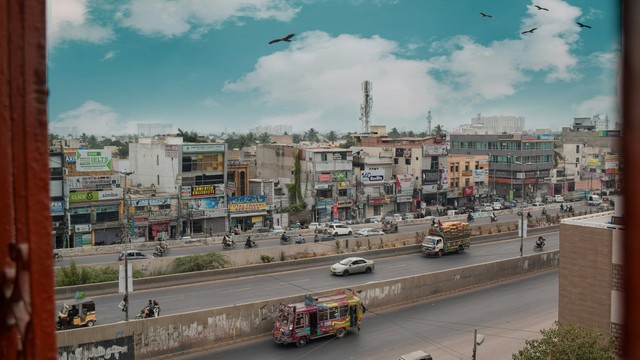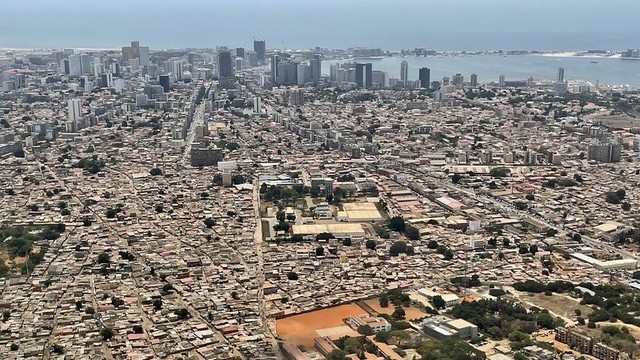Cities’ development trajectories
David Satterthwaite examines the factors driving the development of cities


Areas of Shanghai that just 30 years ago housed farmers and poor workers have been transformed into high-rise business districts (Photo: Arend Kuester via Flickr, CC BY-NC-ND 2.0)
Two previous blogs in this series focused on what drives or shapes urban change within nations. This blog looks at what drives cities’ development trajectories, especially successful large cities.
To make sense of a city’s development trajectory, we can use what we see; people, buildings and infrastructure (or lack of it). You do not need a census to tell you that Mumbai or Shanghai, or hundreds of other cities have seen dramatic increases in high-rise buildings.
We cannot see the financial flows into a city that fund this real estate development, although we see the results. But the illegal/informal real estate market that in many cities has such a strong influence on house prices and city expansion is largely invisible (and most of those engaged in it want to keep it that way).
The mass of data produced by the UN system does not help fill these data gaps. It produces a lot of data on nations. Some is broken down into rural and urban – but not to city level.
The UN can defend this, for they are accountable to national governments. But if city governments have key roles in (for instance) meeting the Sustainable Development Goals (and now controlling the COVID-19 pandemic), city and sub city data are needed to measure and monitor progress. And a list of cities showing where regular supplies of water piped into the home are needed has much more potential to generate action than information on ‘urban areas’.
Economic change shaping cities’ trajectories
We can assume that most of the world’s 100 largest cities discussed in the first three blogs in this series are also among the world’s most economically successful cities. Large cities have to have large economies – even though a large part may be in the informal (usually unrecorded) economy. More than half of non-agricultural (i.e. predominantly urban) employment in the global South is in the informal economy.
Large cities also have large housing and land-for-housing markets – but these too may be largely invisible. In most cities in the global South, 30-60% of the population lives informal settlements, lacking basic services, state entitlements and registered addresses. Many such settlements develop on less visible sites, as their inhabitants hope this will help them avoid eviction.
The economic/employment base of the 100 largest cities in 2020 show large ports/transport hubs, manufacturing industries and being seats of national or regional government influence these cities’ development. These include cities that prospered as ports, manufacturing centres or service centres for fossil fuel extraction, and those that declined as their port lost importance and/or whose industries declined or moved out. There are also the declining cities devastated by war/conflict (such as Aleppo, Aden and other cities in conflict zones in the Middle East).
Most of the 100 cities have moved beyond centres of industry with very large increases in producer and consumer services, and in tertiary education and health care. Most developed the infrastructure to support this – larger (international) airports and expanded highways. For many cities in Europe and China, this included connection to fast train systems.
Many of the 100 cities have become manufacturing and/or service centres for transnational corporations; all are likely to have high capacity information and communications technology serving residents and businesses.
Except in China, many cities in low- and middle-income nations on the 100-city list have concentrations of development assistance and humanitarian agencies and their and their staffs’ (very considerable) demand for goods and services. These may be strong enough to influence the labour market, housing market and consumer market; for instance, how much has this propelled Delhi, Dhaka, Kinshasa and Nairobi up the rankings table? For many of the 100 cities, tourism generates significant employment, so a good climate and a rich cultural history are valuable assets.
Although urbanisation is often viewed as being in opposition to agriculture, a prosperous agricultural sector especially for high-value crops, can stimulate the economies of the local town or city with demand through backward linkages (agricultural chemicals and machinery) and forward linkages (processing, packaging and transport).
Sao Paulo’s rapid growth came initially from it being a prosperous small coffee town. Pig and cattle raising and meat packing were important influences on Chicago’s early development; the city was only incorporated in 1837. Prosperous high-value crops and livestock were important in the rapid growth of Changsha (in China) and Phoenix-Mesa (in the US).
Factors driving development of the world’s 100 largest cities
Before considering how globalisation has reshaped urban development in cities across the world (discussed in the next blog), there are some observations about changes in the rankings of the world’s 100 largest cities between 2000 and 2020:
- China had 26 of the 100 largest cities in 2020, including Shanghai, Beijing, Guangzhou and Chongqing that moved up the ranking between 2000 and 2020. Hardly surprising, given China’s four decades of rapid economic growth within what became the world’s largest economy. Given China’s slow population growth, most urban population growth came from net rural to urban migration.
- India had nine of the 100 largest cities in 2020. Six moved up the ranking 2000-20 (Delhi, Bangalore, Hyderabad, Ahmadabad and Pune; also Surat that was not on the 2000 list). Meanwhile Mumbai, Chennai and Kolkata went down.
- Asia, not including China and India, had 23 of the largest cities in 2020: 10 moved down the rankings between 2000 and 2020 (including four of its wealthiest cities) and 13 moved up (including some very large cities such as Dhaka, Karachi, Lahore).
- Europe scarcely figures on this list; of the six cities that do figure, all were going down the rankings. Yet as the next blog will show, many of the most successful cities in the world are not on the 2020 largest city list.
- The US had 10 of the largest cities in 2020; three moved up the rankings between 2000 and 2020 (Houston, Atlanta, Phoenix-Mesa) and seven moved down.
- Africa had 12 of the largest cities in 2020 and all but one (Alexandria) moved up the ranks. These included five cities that were not in the 100 largest city list in 2000: Luanda, Dar es Salaam, Addis Ababa, Nairobi and Cape Town.
- Latin America had 11 of the largest cities in 2020; three moved up the rankings between 2000 and 2020 (São Paulo, Bogotá, Brasília) and eight went down. The three largest Latin American cities (Mexico City, São Paulo and Buenos Aires) are the fourth, fifth and 15th largest cities in 2020 but likely to be moving down.
Prior to the COVID-19 pandemic, one could predict with confidence that the dominance of China’s cities in the top 100 list would continue. We would also predict more cities in sub-Saharan Africa moving up the rankings.
But now, what controls and other changes will come from governments and from private sector interests? How will investment patterns, priorities and geographies change? Which city economies will benefit, which will lose? What constraints will be placed on the free movement of labour and for whom?
What constraints and conditions for tourists and other international travellers? Will pressure from the private sector and from those desperate for a source of income mean countries reopening their economies too soon? Will the emergency support for those with no incomes reach all in need and is the funding and political will there to ensure this continues?
In so many large cities, governments will continue facing enormous deficits in public infrastructure and services, including those so much needed for public health. And unless urgent action is taken, these deficits will grow, overwhelmed by poor governance and rapid population growth.
This is evident in many of the cities in the 100 largest cities list in 2020. COVID-19 does not change this. But it makes addressing these deficits ever more urgent.



